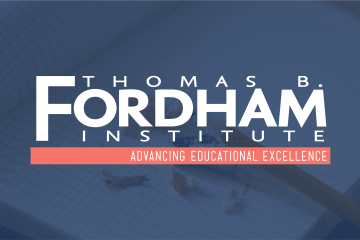Countless articles have been written about students’ recent bleak performance on the Nation’s Report Card, most of which rightly bemoaned declines in reading and math, compared to 2019 and 2022 scores, especially among lower-scoring students. Yet little attention has been paid to the other end of the achievement spectrum—our high achievers—where the 2024 scores were less worrying and even contained some good news. Which complicates the situation for advocates of advanced leaders, ourselves included, as well as policymakers and school leaders, who may now be tempted to make decisions that needlessly harm advanced students.
Here's a snapshot table from the U.S. Department of Education that depicts these differing trends since 2022:

And here are graphs showing the trends in more detail since 2019:

Source: NAEP Data Explorer
In all four subject-grade combinations, scores at the 90th percentile were flat or improved compared to 2022. And in fourth grade math, the higher achievers recovered all the way back to their predecessors’ 2019, pre-pandemic score. Meanwhile, the 10th and 25th percentiles were flat in fourth grade math and were down everywhere else, often by wide margins.
What is causing high achievers’ very different trajectory? And how should school and policy leaders respond to it?
To the first question, it’s complicated. There’s nothing good about the declines among our lowest-scoring students, and many thoughtful people have written at length about the causes and effects of those drops. But the news at the high end? On the one hand, it’s undeniably positive. When a subset of students shows signs of recovering from the pandemic’s devastating effects on learning, it’s worthy of celebration. Full stop. On the other hand, the further widening of achievement gaps isn’t positive, especially when it’s caused by worrisome declines at the bottom (versus an instance in which all groups are improving and the high end is just improving more).
To the second question about causes, no one can be sure. Perhaps students at the high end fared better during the pandemic while learning virtually from home, thereby acquiring more of the requisite knowledge and skills to succeed in school today (although some research suggests the opposite, as least in places with lengthy closures, while others surmise that educational software disproportionately benefits high achievers). Maybe they spend less times looking at and interacting with screens outside of educational activities. Maybe they’re more likely to have advantages their lower-achieving peers don’t, such as affluent and highly-educated parents who have more time outside of school hours for enrichment and other forms of support. Maybe because school went OK for them over the last five years, they stayed engaged and motivated, which helps drive them now to do the work necessary to earn higher scores. Likely, it’s a combination of all of these factors, as well as umpteen variables I didn’t list or haven’t thought of.
Which brings us to the third question: How should school and policy leaders respond to this phenomenon? How should they treat the ongoing education of America’s high achievers even as they strive for belated recovery among lower achievers? This is a key issue, the more so because of the temptation—and political pressure—to make a choice that has long plagued advanced students: decide that they’ll be fine no matter and therefore slight or abandon any dedicated focus to their education and divert all attention and resources to lower-achieving students who are suffering declines.
This would be a mistake for three reasons. The first two I’ve written about more times than I can count: One, these students, like all students, deserve an education that maximizes their achievement and best prepares them for success later in life; and two, the country needs advanced learners to be highly educated to ensure our long-term competitiveness, security, and innovation.
The third reason, however, is less obvious. Not only would the abandonment of programs dedicated to advanced students endanger one of the few semi-success stories emerging from the pandemic—it would gravely threaten an equity challenge that American education was just starting to take on: ensuring that advanced students who are Black, Hispanic, low-income, and otherwise underserved are fully represented in them. Abolishing these offerings would eliminate benefits these young people can’t get elsewhere. As I demonstrated at length in a research brief last October, participants from these underrepresented groups gain the most from advanced education. It’s the best way to maximize their achievement.
In other words, abandoning programs for advanced students because they’re rebounding from learning loss while their peers aren’t would be unfair to these children, bad for the future of the country, and would do the most harm to the most marginalized among them. So, school leaders, don’t do it. Don’t try to help one group by hurting another. There are far better ways to respond to the nation’s declining achievement.




